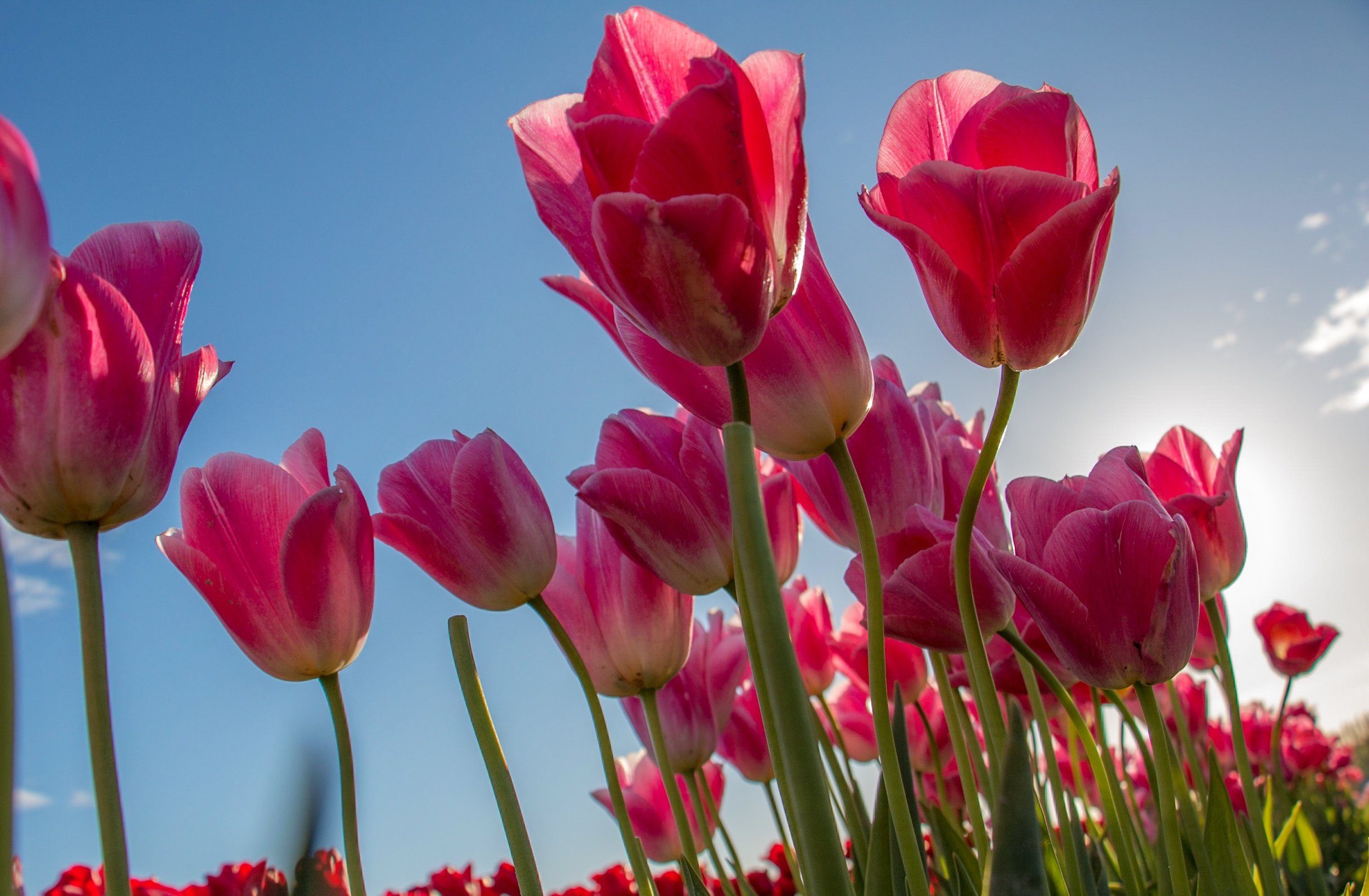What Makes a Captivating Photograph?
Placing the camera close to the ground and shooting upward produces a view of these tulips that we are not accustomed to seeing.
I was told by a veteran photographer when I got my first camera to take the time to learn the features of the camera, to know the menu system, and exactly what each button or dial does. I got skilled enough that I could simply feel my way around the camera to change the settings I used most without having to look at it. The next thing I remember learning was the three parameters that affected the exposure of an image, those three things being the shutter speed, the aperture opening, and the ISO setting (this is will be the topic of a future article).
Once I had a grasp on all the technical mumbo jumbo, I felt ready to make some art with my new camera. There was quite a bit of excitement from being able to use the camera proficiently and capture well exposed pictures, but unfortunately I didn’t find many of the images all that captivating. What was missing? What makes an image a good one? Why do some images attract the eye and, even more importantly, hold the viewer’s attention? The answer to that is composition.
There are many rules of composition in art, such as the rule of thirds, the golden ratio, rule of symmetry, leading lines, framing and many many more. These are also rules in photography, because they have been proven to lead to more captivating images, but to call these “rules” is a bit of a misnomer. Rules imply that they must be kept. Rather than “rules”, I like to think of these as composition guidelines. They should assist you in your creativity, not restrict you by forcing forcing the end result of your photography into a type of composition. Art is defined as “a diverse range of human activities in creating visual, auditory or performing artifacts, expressing the author's imaginative, conceptual ideas, or technical skill intended to be appreciated for their beauty or emotional power.” So to say that there are rules in art is misleading at best.
“If you change the way you look at things, the things you look at change.”
I plan on combining similar rules (guidelines) of composition and expounding on them further in future articles, but today I want to share the most important thing I read on creating captivatingly interesting images. My suggestion is to simply provide the viewer with a unique perspective. This is based on one of my favorite quotes from Wayne Dyer: “If you change the way you look at things, the things you look at change.” We are accustomed to seeing things from eye level and, especially in photography, when an image is not from the perspective we are used to, it draws our attention. There are times when living in a small town like Walla Walla feels like there is nothing new to see or to photograph, but a new perspective can bring new life to the same old scenes. So squat, kneel, lay on your stomach, climb up high, shoot through things, get real close, shoot upside down, do what you can to see things differently, and your audience will see the world different through your art.
Shooting through the fencing both frames the wagon and leads the eye to the subject.
This image of my dog “Oliver” would not capture his personality and playfulness if taken from above.
Victor Attoh is a physical therapist and photographer who lives in the Walla Walla area. Follow him on Instagram at @visual_gemz




